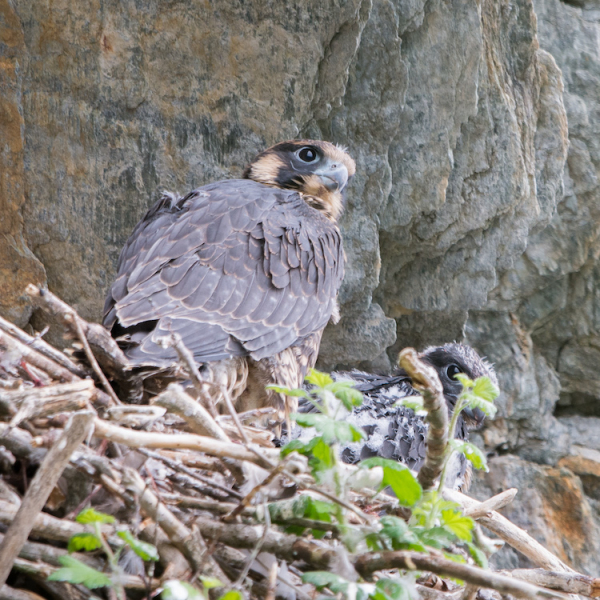
|
Cliffs Clear to Hike and Climb Again
Hikers and rock climbers can return to Vermont cliffs now that peregrine falcon nesting season has ended. The Vermont Fish and Wildlife Department and Audubon Vermont have confirmed that the majority of young falcons have learned to fly and should not be disturbed by human presence on the cliffs.
According to Audubon biologist Margaret Fowle, who coordinates the monitoring effort on behalf of the Fish and Wildlife Department, biologists and volunteers monitored peregrine pairs that occupied at least 40 Vermont cliffs in early spring and summer.
“The young peregrines have fledged, and many of Vermont’s falcons had another successful year,” she said, “The success is due to a combination of factors, including good weather and cooperation from hikers and rock climbers who observe a respectful distance from the nests during this critical period.”
Fowle noted that peregrine nesting success would not be possible without the more than 45 volunteers who monitor the nest sites statewide from March to the end of July.
Vermont Fish and Wildlife’s nongame bird biologist Jillian Kilborn, who works closely with Audubon partners, said “We greatly appreciate the time and effort volunteers put into monitoring the population this year. We thank landowners and recreationists for their cooperation in protecting nesting peregrines from human disturbance.”
Vermont Fish and Wildlife and Audubon Vermont partner to monitor and protect peregrine nesting sites in Vermont. Peregrine falcons were removed from the state’s Threatened and Endangered Species List in 2005. Ongoing cooperation from recreationists and continued monitoring efforts by Vermont Fish and Wildlife and Audubon Vermont will help sustain the peregrine’s remarkable recovery into the future.